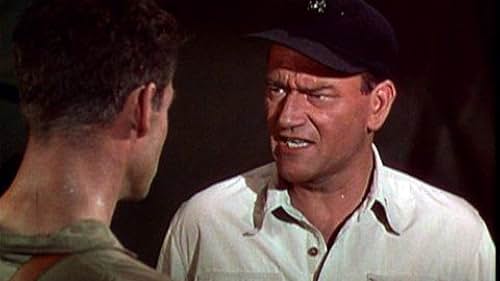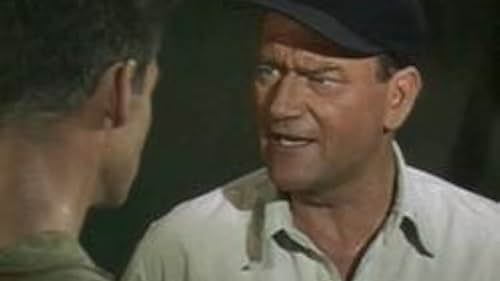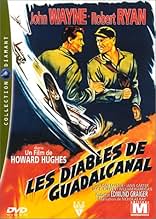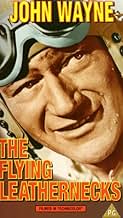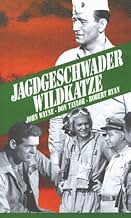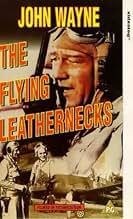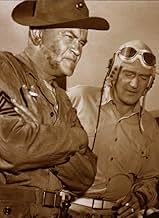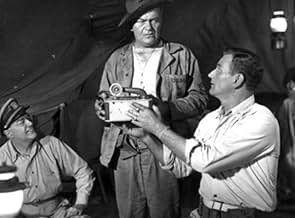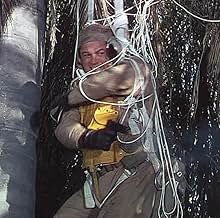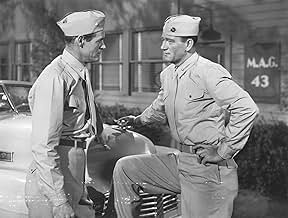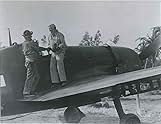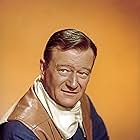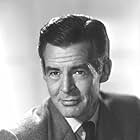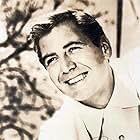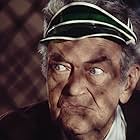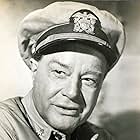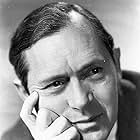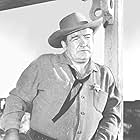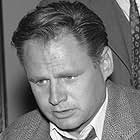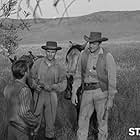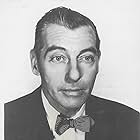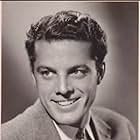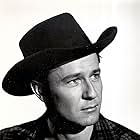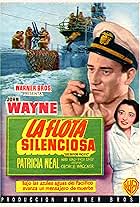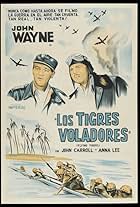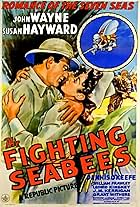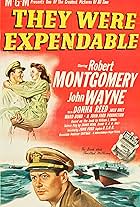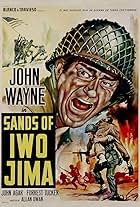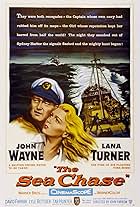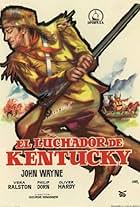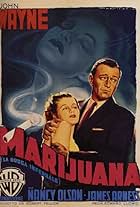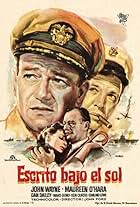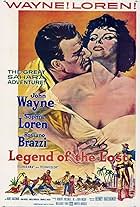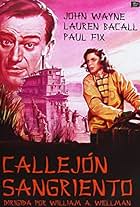PUNTUACIÓN EN IMDb
6,3/10
5,7 mil
TU PUNTUACIÓN
Añade un argumento en tu idiomaMajor Kirby leads The Wildcats squadron into the historic WWII battle of Guadalcanal.Major Kirby leads The Wildcats squadron into the historic WWII battle of Guadalcanal.Major Kirby leads The Wildcats squadron into the historic WWII battle of Guadalcanal.
Michael St. Angel
- Capt. Harold Jorgensen, Ops. Officer
- (as Steve Flagg)
Barry Brooks
- Squadron Commander
- (sin acreditar)
Charles Brunner
- Charlie's Father
- (sin acreditar)
Argumento
¿Sabías que...?
- CuriosidadesJohn Wayne and Robert Ryan managed to put aside their vast political differences while making this film, although Ryan was appalled by Wayne's support for blacklisting, extending the Korean War by launching nuclear strikes on Chinese cities, and using military force to drive the Soviets out of eastern Europe. However they later did not get along at all while filming El día más largo (1962).
- PifiasAt about the 56 minute mark, the Navajo Indian pilot is shot in a dogfight. In the initial scene he is wounded in the right leg; in subsequent scenes, the wound is in the left leg.
- Citas
Maj. Daniel Xavier Kirby: Are we all buttoned up?
Joan Kirby: Cat's out... doors locked. All secure sir.
- ConexionesFeatured in The World According to Smith & Jones: War (1988)
Reseña destacada
The central story is elementary. Wayne arrives to command a group of Hellcats on Guadalcanal. His executive officer is Robert Ryan. Wayne is a taciturn, no-nonsense typa guy who doesn't suffer humanitarians easily. Ryan is a humanitarian. (A fairly decent reflection of offscreen attitudes here.)
Ryan is always saying things about his wisecracking, fun-loving men like, "They're just kids." And Wayne's first priority is to force them to become disciplined and efficient warriors. He's distant enough that when he sends the men a bottle of saki, he tells the messenger not to reveal the identity of the donor. Not that Ryan is a namby-pamby. He's shown as gentle but not coddling. And he's smart too. One of his men complains that every time he goes up, his chances of coming down alive are narrowed. Ryan explains Baldt's theorem, or whatever it is, which states that your chances remain the same no matter how many times you've flown. Just like flipping a coin. With each flip, your chance of getting heads or tails is even, no matter how many times you've flipped it. (This ignores something called The Law of Limits, I think, but I don't want to get in over my head here so I'll quit.) Okay, maybe Ryan thinks too much, but at least statistics isn't as bad as a taste for Shakespeare, which was John Agar's failing in "Sands of Iwo Jima." Math is a man's job, finally, whereas Shakespeare is only one step removed from fairyhood.
Anyway the conflict intensifies and Ryan finally turns on Wayne, saying, "I've had a belly full of you!" There is a fierce confrontation and Wayne departs to train pilots elsewhere in ground support using Corsairs, a legendary Pacific fighter. He does not recommend Ryan as his replacement because Ryan, as we all know, hasn't got the guts for command.
Now -- you've got the picture of the conflict. We have, on the one hand, the stern, distant, not unfeeling Wayne leader. And on the other hand we have the casual, humanitarian Ryan who identifies with his men too much. Okay. The conflict is resolved at the end of the picture and the two men agree to meet later and get drunk together. I ask you: in whose favor is this conflict resolved? No power on earth could drag the answer from me.
This movie was directed by Nicholas Ray, although you'd never know it. Comedy relief is provided by the scrounging line chief, J. C. Flippen, who refers to non-aviation types as "mud Marines" and is patronizingly tolerated by Wayne. All the combat footage is from official Navy film. You have seen every shot exactly one thousand, two hundred, and forty-two times before.
Those F4U Corsairs were marvelous airplanes with a top speed of about 450 miles an hour.
Ryan is always saying things about his wisecracking, fun-loving men like, "They're just kids." And Wayne's first priority is to force them to become disciplined and efficient warriors. He's distant enough that when he sends the men a bottle of saki, he tells the messenger not to reveal the identity of the donor. Not that Ryan is a namby-pamby. He's shown as gentle but not coddling. And he's smart too. One of his men complains that every time he goes up, his chances of coming down alive are narrowed. Ryan explains Baldt's theorem, or whatever it is, which states that your chances remain the same no matter how many times you've flown. Just like flipping a coin. With each flip, your chance of getting heads or tails is even, no matter how many times you've flipped it. (This ignores something called The Law of Limits, I think, but I don't want to get in over my head here so I'll quit.) Okay, maybe Ryan thinks too much, but at least statistics isn't as bad as a taste for Shakespeare, which was John Agar's failing in "Sands of Iwo Jima." Math is a man's job, finally, whereas Shakespeare is only one step removed from fairyhood.
Anyway the conflict intensifies and Ryan finally turns on Wayne, saying, "I've had a belly full of you!" There is a fierce confrontation and Wayne departs to train pilots elsewhere in ground support using Corsairs, a legendary Pacific fighter. He does not recommend Ryan as his replacement because Ryan, as we all know, hasn't got the guts for command.
Now -- you've got the picture of the conflict. We have, on the one hand, the stern, distant, not unfeeling Wayne leader. And on the other hand we have the casual, humanitarian Ryan who identifies with his men too much. Okay. The conflict is resolved at the end of the picture and the two men agree to meet later and get drunk together. I ask you: in whose favor is this conflict resolved? No power on earth could drag the answer from me.
This movie was directed by Nicholas Ray, although you'd never know it. Comedy relief is provided by the scrounging line chief, J. C. Flippen, who refers to non-aviation types as "mud Marines" and is patronizingly tolerated by Wayne. All the combat footage is from official Navy film. You have seen every shot exactly one thousand, two hundred, and forty-two times before.
Those F4U Corsairs were marvelous airplanes with a top speed of about 450 miles an hour.
- rmax304823
- 29 abr 2004
- Enlace permanente
Selecciones populares
Inicia sesión para calificar y añadir a tu lista para recibir recomendaciones personalizadas
- How long is Flying Leathernecks?Con tecnología de Alexa
Detalles
- Fecha de lanzamiento
- País de origen
- Idioma
- Títulos en diferentes países
- Infern als núvols
- Localizaciones del rodaje
- Empresa productora
- Ver más compañías en los créditos en IMDbPro
- Duración1 hora 42 minutos
- Relación de aspecto
- 1.37 : 1
Contribuir a esta página
Sugerir un cambio o añadir el contenido que falta

Principal laguna de datos
By what name was Infierno en las nubes (1951) officially released in India in English?
Responde
